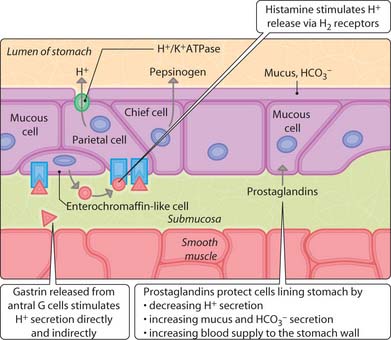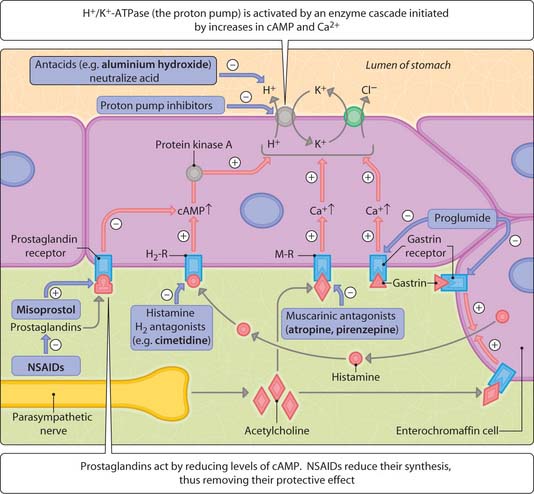18 Gastrointestinal tract
anti-ulcer agents
The gastrointestinal tract is principally concerned with the breakdown of food and absorption of amino acids, peptides, carbohydrates, sugars and lipids. These are transported to the liver for conversion into proteins, carbohydrates and lipids for the body’s needs. The digestion of food involves the release of gastric acid from parietal cells of the stomach, digestive enzymes and mucus (Fig. 3.18.1). An imbalance between acid production and the mucus barrier protecting the epithelium lead to tissue damage through the corrosive action of gastric acid, resulting in peptic ulcers (in stomach (gastric) and duodenum). Peptic ulcers are characterized by mucosal bleeding, perforation and, when situated near the pyloric sphincter, obstruction of food leaving the stomach. Symptoms of peptic ulcers include burning sensation below the breastbone, nausea, vomiting and, in more severe cases, persistent stomach pain, bloody or black stools and bloody vomit. Causative factors include Helicobacter pylori infection, chronic use of NSAIDs, genetic factors, alcohol and stress. A variety of treatment strategies exist for peptic ulcers and include eradication of H. pylori infection (antibiotics), inhibition of acid secretion (histamine H2 antagonists, proton pump inhibitors (PPIs)), cytoprotective agents and mucosal strengtheners (prostaglandins, antacids, sucralfate) (Fig. 3.18.2).
< div class='tao-gold-member'>
Stay updated, free articles. Join our Telegram channel

Full access? Get Clinical Tree






